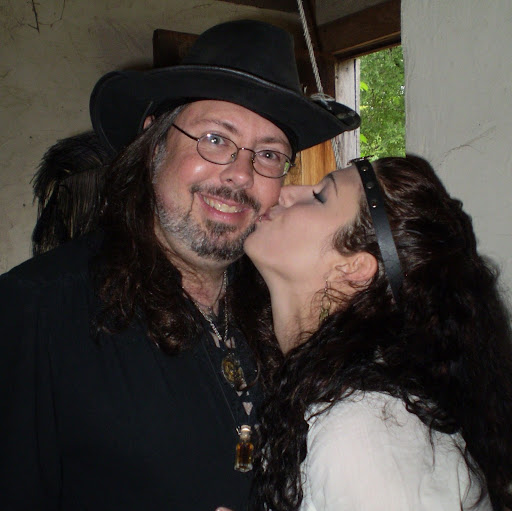Raymond F Clark
age ~94
from Las Vegas, NV
Raymond Clark Phones & Addresses
- 1320 Casa Del Rey Ct, Las Vegas, NV 89117 • 6502577984
- Redwood City, CA
- Hacienda Heights, CA
- Hacienda Heights, CA
Work
-
Company:Transvideo television
-
Address:990 Villa St, Mountain View, CA 94041
-
Phones:6509654898
-
Position:Finance executive
-
Industries:Television Broadcasting Stations
Wikipedia References

Raymond Clark (Engineer)
Name / Title
Company / Classification
Phones & Addresses
Finance Executive
Transvideo Television
Television Broadcasting Stations
Television Broadcasting Stations
990 Villa St, Mountain View, CA 94041
President
Flying Samaritans
Health/Allied Services
Health/Allied Services
410 Alhambra Rd, San Gabriel, CA 91775
6262826318
6262826318
Owner
R C Machining
Machinery · Mfg Industrial Machinery
Machinery · Mfg Industrial Machinery
4131 E Addington Cir, Anaheim, CA 92807
7149749089
7149749089
Principal
The Auto Spa
Physical Fitness Facility
Physical Fitness Facility
525 Harrison St, San Francisco, CA 94105
Chief Executive Officer
Provue Development Corp
Computer Software Design
Computer Software Design
18685 Main St, Huntington Beach, CA 92648
7148417779
7148417779
Finance Executive
Transvideo Television
Video Production · Television Broadcasting · Video Production & Taping Serv
Video Production · Television Broadcasting · Video Production & Taping Serv
990 Villa St, Mountain View, CA 94041
6509601190, 6509654898
6509601190, 6509654898
Raymond F. Clark Family Limited Partnership
3681 21 St, San Francisco, CA 94114
M
Transvideo Studios
Marketing and Advertising · Film & Video Production · Television Program Production
Marketing and Advertising · Film & Video Production · Television Program Production
990 Villa St, Mountain View, CA 94041
228 Palo Alto Ave Mtn, Mountain View, CA 94041
990 Villa St Mtn, Mountain View, CA 94041
6509654898
228 Palo Alto Ave Mtn, Mountain View, CA 94041
990 Villa St Mtn, Mountain View, CA 94041
6509654898
Us Patents
-
Internal Combustion Engine Valve Operating Mechanism
view source -
US Patent:6604497, Aug 12, 2003
-
Filed:Aug 7, 2001
-
Appl. No.:09/924947
-
Inventors:Raymond C. Clark - Huntington Beach CA 92647
Jarrid Gross - Fullerton CA 92835
Ron Long - GardenGrove CA 92840
Lance E. Nist - Santa Ana CA 92705 -
International Classification:F01L 902
-
US Classification:123 9012, 123 9015, 123 9011
-
Abstract:The reciprocating valve actuation and control system includes a poppet valve moveable between a first and second position; a source of pressurized hydraulic fluid; a hydraulic actuator including an actuator piston coupled to the poppet valve and reciprocating between a first and second position responsive to flow of the pressurized hydraulic fluid to the hydraulic actuator; an electrically operated valve controlling flow of the pressurized hydraulic fluid to the actuator; and an engine computer that generates electrical pulses to control the electrically operated valve. The electrically operated valve includes a linear latching motor, which includes a solenoid coil associated with a permanent magnet, wherein the coil is energized to create a central axial repelling magnetic field relative to the permanent magnet field, and to generate concentric repelling and attractive fields to produce secondary repelling and tertiary attractive forces on the permanent magnet.
-
Method For Controlling Internal Combustion Engine Valve Operating Mechanism
view source -
US Patent:20010006049, Jul 5, 2001
-
Filed:Jan 16, 2001
-
Appl. No.:09/761214
-
Inventors:Harry Buehrle - Irvine CA, US
Raymond Clark - Huntington Beach CA, US
Jarrid Gross - Fullerton CA, US
Ron Long - Garden Grove CA, US
Lance Nist - Santa Ana CA, US -
International Classification:F01L009/02
F01L001/34 -
US Classification:123/090120, 123/090150
-
Abstract:The reciprocating valve actuation and control system includes a poppet valve moveable between a first and second position; a source of pressurized hydraulic fluid; a hydraulic actuator including an actuator piston coupled to the poppet valve and reciprocating between a first and second position responsive to flow of the pressurized hydraulic fluid to the hydraulic actuator; an electrically operated valve controlling flow of the pressurized hydraulic fluid to the actuator; and an engine computer that generates electrical pulses to control the electrically operated valve. The electrically operated valve preferably comprises a three path rotary latched magnetic motor actuating a rotary valve portion having a housing, a rotor, and a stator receiving and supplying hydraulic fluid pressure to the rotor, which alternately directs the hydraulic fluid pressure to the valve cylinder for opening of the valve, or to return to the engine oil sump, for closing the valve. In a presently preferred embodiment, the hydraulic actuator comprises a self-contained cartridge assembly including an actuator piston with dampers for damping motion of the actuator piston, limiting the actuator stroke to assure soft seating of the actuator, and to avoid overshoot during the engine valve opening stroke and the engine valve return stroke. The electro-hydraulic valves are electrically controlled by the engine computer, which generates electrical signals carried to the electro-hydraulic valves. The engine computer typically senses conventional engine variables, and optimizes performance of the valve actuation and control system according to preestablished guidelines, with information being supplied to the engine computer by sensors. The engine computer controls all aspects of engine performance, interfaces with all of the peripheral sensors, and calculates fuel parameters, ignition timing and engine valve timing based upon prior mapping of the engine. In this manner the engine can be controlled so as to provide maximum fuel economy, minimum emissions, maximum engine torque, or a compromise between these parameters.
-
Acoustical Absorptive Splitter
view source -
US Patent:20030098200, May 29, 2003
-
Filed:Nov 29, 2001
-
Appl. No.:10/022039
-
Inventors:Raymond Clark - Huntington Beach CA, US
-
Assignee:Allied International Corporation
-
International Classification:E04B001/82
-
US Classification:181/292000, 181/210000
-
Abstract:An acoustic absorptive splitter consisting of two absorptive faces separated by a single on-quarter wavelength cavity support is disclosed as an equal substitute for a multi-layered splitter containing a central septum. This construction takes advantage of the reflective properties of the absorptive face sheets to support standing waves in the tuning cavities and in the duct cross modes. The utilization of these design principles permits significant silencer size and weight reduction. It also permits reduced splitter manufacturing costs by elimination of two layers of materials, difficult internal bonding and improvements in quality.
-
Feeding Tube Spike Set With Integrated Y-Port
view source -
US Patent:63324679, Dec 25, 2001
-
Filed:Apr 5, 2000
-
Appl. No.:9/543126
-
Inventors:Lonnie Hutson - San Dimas CA
Leonard Hoffstetter - San Dimas CA
Raymond D. Clark - Oceanside CA -
Assignee:LH Medical Products, Inc. - San Dimas CA
-
International Classification:A61F 537
-
US Classification:128877
-
Abstract:A Feeding tube spike set with integrated Y-port is disclosed. The preferred spike set includes a spike, a drip chamber, a y-port fitting, a stepped connector, and tubing connecting these components to one another in series. The y-port fitting further includes a body, a plug assembly and an undulating retaining member connecting the plug assembly to the body. The plug assembly further includes a plug from which a pair of tabs extend. The body also includes a flushing port formed within it; the preferred flushing port includes a plurality of ridges formed along it's bore to assist in retaining a secure seal between the inserted plug and the body.
-
Internal Combustion Valve Operating Mechanism
view source -
US Patent:61736848, Jan 16, 2001
-
Filed:Jan 10, 2000
-
Appl. No.:9/480098
-
Inventors:Harry W. Buehrle - Irvine CA
Raymond C. Clark - Huntington Beach CA
Jarrid Gross - Fullerton CA
Ron Long - Garden Grove CA
Lance E. Nist - Santa Ana CA -
International Classification:F01L 902
-
US Classification:123 9012
-
Abstract:The reciprocating valve actuation and control system includes a poppet valve moveable between a first and second position; a source of pressurized hydraulic fluid; a hydraulic actuator including an actuator piston coupled to the poppet valve and reciprocating between a first and second position responsive to flow of the pressurized hydraulic fluid to the hydraulic actuator; an electrically operated valve controlling flow of the pressurized hydraulic fluid to the actuator; and an engine computer that generates electrical pulses to control the electrically operated valve. The electrically operated valve preferably comprises a three path rotary latched magnetic motor actuating a rotary valve portion having a housing, a rotor, and a stator receiving and supplying hydraulic fluid pressure to the rotor, which alternately directs the hydraulic fluid pressure to the valve cylinder for opening of the valve, or to return to the engine oil sump, for closing the valve. In a presently preferred embodiment, the hydraulic actuator comprises a self-contained cartridge assembly including an actuator piston with dampers for damping motion of the actuator piston, limiting the actuator stroke to assure soft seating of the actuator, and to avoid overshoot during the engine valve opening stroke and the engine valve return stroke. The electro-hydraulic valves are electrically controlled by the engine computer, which generates electrical signals carried to the electro-hydraulic valves.
-
Engine Valve Actuating Device
view source -
US Patent:53479610, Sep 20, 1994
-
Filed:Oct 27, 1993
-
Appl. No.:8/141647
-
Inventors:Harry W. Buehrle - Irvine CA
Lance E. Nist - Santa Ana CA
Raymond C. Clark - Huntington Beach CA -
International Classification:F01L 904
-
US Classification:123 9011
-
Abstract:An internal combustion engine valve actuating device located directly above each cylinder which has a co-axial venturi shaped duct (20) that is removably attached with threaded capscrews (24) and sealed with an o-ring (28). The interior of the duct contains a number of inwardly facing vanes (30) that hold an electromechanical valve actuator (48) complete with an engine intake valve (50). When a pulsed electrical signal is received by the actuator, opposed electromagnetic fields are developed reciprocating the valve. A fuel injection system introduces combustible fuel into the duct at the trailing edge of the vanes. The valve actuating device may also be applied to the exhaust system, less the fuel injection, and the valve actuator may be cooled by interconnecting cavities (60) within the vanes using engine coolant or oil.
-
Transcutaneous Sensor Insertion Set
view source -
US Patent:55688063, Oct 29, 1996
-
Filed:Feb 16, 1995
-
Appl. No.:8/393159
-
Inventors:Paul S. Cheney - Beverly Hills CA
John J. Mastrototaro - Los Angeles CA
Nannette M. Schnabel - Valencia CA
Peter C. Lord - Valencia CA
William P. Van Antwerp - Los Angeles CA
Raymond D. Clark - Valencia CA -
Assignee:MiniMed Inc. - Sylmar CA
-
International Classification:A61B 500
-
US Classification:128635
-
Abstract:An improved insertion set is provided for transcutaneous placement of a sensor such as a glucose sensor at a selected site within the body of a patient. The insertion set comprises an insertion needle extending through a mounting base adapted for mounting onto the patient's skin. A flexible thin film sensor includes a proximal segment carried by the mounting base and adapted for electrical connection to a suitable monitor or the like, and a distal segment protruding from the mounting base with sensor electrodes thereon for transcutaneous placement. The distal segment of the sensor and a distal segment of the insertion needle are positioned within a flexible cannula which extends from the mounting base, whereby placement of the mounting base onto the patient's skin causes the insertion needle to pierce the skin for transcutaneous placement of the cannula with the sensor therein. The insertion needle can then be withdrawn from the cannula and the mounting base to leave the sensor distal segment at the selected insertion position, with the sensor electrodes being exposed to patient blood or other extracellular fluid via a window formed in the cannula. The cannula is carried by the mounting base to insure alignment of the sensor electrodes with the cannula window.
-
Internal Combustion Engine Valve Operating Mechanism
view source -
US Patent:60240601, Feb 15, 2000
-
Filed:Jun 5, 1998
-
Appl. No.:9/092445
-
Inventors:Harry W. Buehrle - Irvine CA
Raymond C. Clark - Huntington Beach CA
Jarrid Gross - Fullerton CA
Ron Long - Garden Grove CA
Lance E. Nist - Santa Ana CA -
International Classification:F01L 902
-
US Classification:123 9012
-
Abstract:The reciprocating valve actuation and control system includes a poppet valve moveable between a first and second position; a source of pressurized hydraulic fluid; a hydraulic actuator including an actuator piston coupled to the poppet valve and reciprocating between a first and second position responsive to flow of the pressurized hydraulic fluid to the hydraulic actuator; an electrically operated valve controlling flow of the pressurized hydraulic fluid to the actuator; and an engine computer that generates electrical pulses to control the electrically operated valve. The electrically operated valve preferably comprises a three path rotary latched magnetic motor actuating a rotary valve portion having a housing, a rotor, and a stator receiving and supplying hydraulic fluid pressure to the rotor, which alternately directs the hydraulic fluid pressure to the valve cylinder for opening of the valve, or to return to the engine oil sump, for closing the valve. In a presently preferred embodiment, the hydraulic actuator comprises a self-contained cartridge assembly including an actuator piston with dampers for damping motion of the actuator piston, limiting the actuator stroke to assure soft seating of the actuator, and to avoid overshoot during the engine valve opening stroke and the engine valve return stroke. The electro-hydraulic valves are electrically controlled by the engine computer, which generates electrical signals carried to the electro-hydraulic valves.
Resumes

Raymond Clark St. Louis, MO
view sourceWork:
City of St. Louis Refuse Division
2007 to 2013 Chouteau
2000 to 2007
Transporter South Grand
1992 to 2000
Machine Operator/ Forklift Driver Mopped
1998 to 1999
2007 to 2013 Chouteau
2000 to 2007
Transporter South Grand
1992 to 2000
Machine Operator/ Forklift Driver Mopped
1998 to 1999
Education:
Soldan High School
1986
High School Diploma
1986
High School Diploma

Raymond Clark Memphis, TN
view sourceWork:
ALPHA OMEGA VETERANS SERVICES
2008 to Jul 2011
Human Resources Manager CDA, Inc
2007 to 2008
Human Resources Manager RAC ENVIROMENT SVS
1996 to 2006
Owner University of Tennessee, Memphis
Memphis, TN
1992 to 1996
Chief of Police Shelby County Correction Center
1991 to 1992
Assistant Warden Methodist Hospitals of Memphis
1987 to 1991
Director of Security University of California
San Francisco, CA
1982 to 1986
Chief of Police Peralta Community College District
1975 to 1982
Director of Safety and Police Oakland Police Department
1972 to 1975
Police Officer
2008 to Jul 2011
Human Resources Manager CDA, Inc
2007 to 2008
Human Resources Manager RAC ENVIROMENT SVS
1996 to 2006
Owner University of Tennessee, Memphis
Memphis, TN
1992 to 1996
Chief of Police Shelby County Correction Center
1991 to 1992
Assistant Warden Methodist Hospitals of Memphis
1987 to 1991
Director of Security University of California
San Francisco, CA
1982 to 1986
Chief of Police Peralta Community College District
1975 to 1982
Director of Safety and Police Oakland Police Department
1972 to 1975
Police Officer
Education:
California Coast University
Santa Ana, CA
1978
MBA in Business Administration California Coast University
Santa Ana, CA
1976
BS in Business Administration College of Alameda
Alameda, CA
1972
A. A. in Business Administration
Santa Ana, CA
1978
MBA in Business Administration California Coast University
Santa Ana, CA
1976
BS in Business Administration College of Alameda
Alameda, CA
1972
A. A. in Business Administration
Lawyers & Attorneys
License Records
Raymond Dwight Clark
License #:
93117 - Expired
Issued Date:
Jul 1, 1990
Renew Date:
Sep 30, 1991
Expiration Date:
Sep 30, 1991
Type:
Registered Nurse
Myspace

Raymond Clark
view sourceLocality:
BASKETBALL CITY(PHILLY), Pennsylvania
Gender:
Male
Birthday:
1950

Raymond Clark
view sourceYoutube
Plaxo

Raymond Clark
view sourceGoogleplus

Raymond Clark
Education:
Chatham College
Tagline:
I love meeting new friends.

Raymond Clark
Education:
DeVry University

Raymond Clark
Education:
Byron middle

Raymond Clark
Relationship:
Married
About:
President of the Mule Train, V.P. of the PR Unit, Past Wagon Master (2010) of the Nomads and Editor of the Al Kaly Shriners Dust Magazine

Raymond Clark

Raymond Clark
Tagline:
Single and enjoying life
Bragging Rights:
3 Kids, Two girls 21,14 and 1 Boy 9 single

Raymond Clark
Relationship:
Single

Raymond Clark
Get Report for Raymond F Clark from Las Vegas, NV, age ~94








